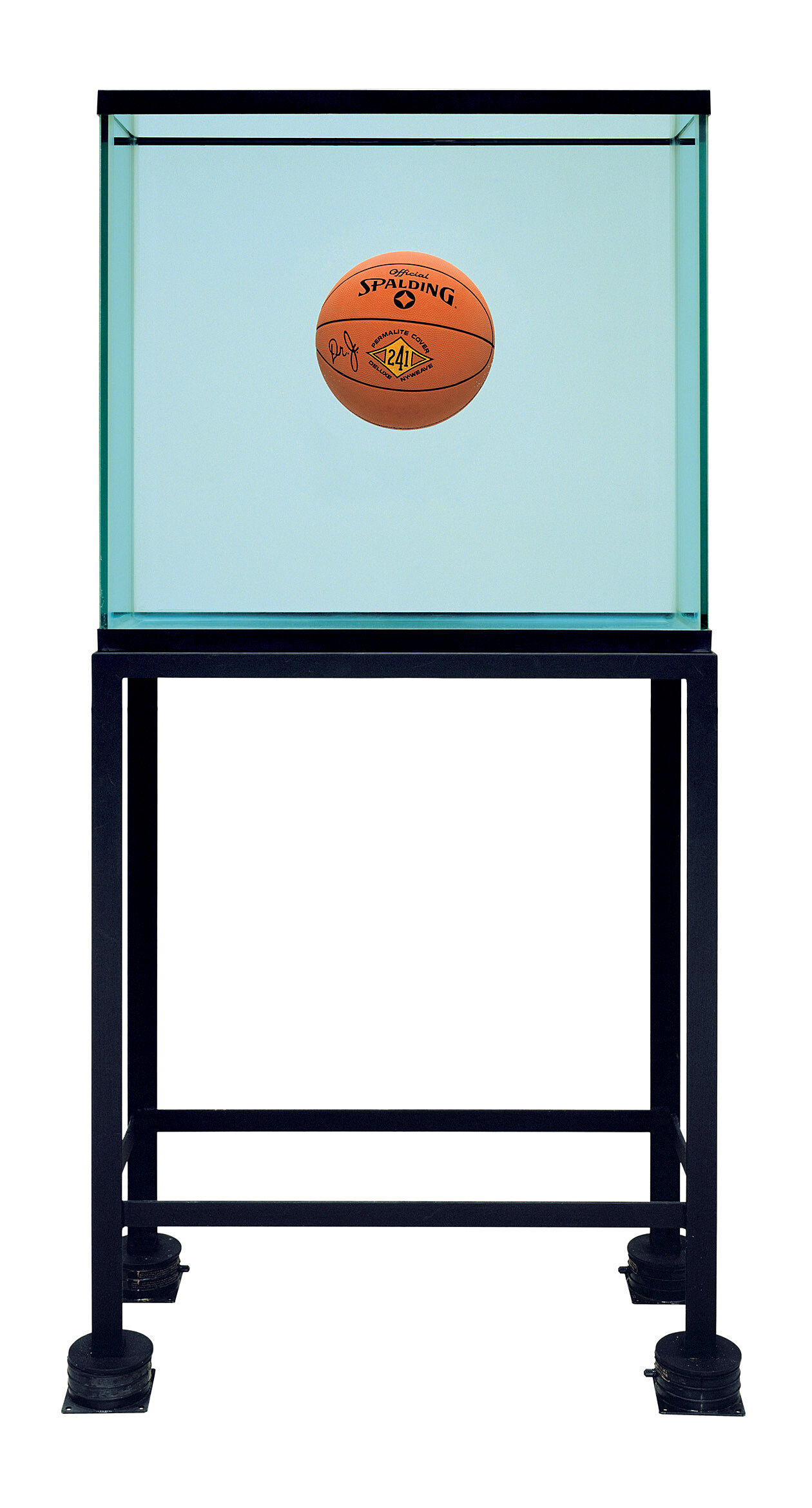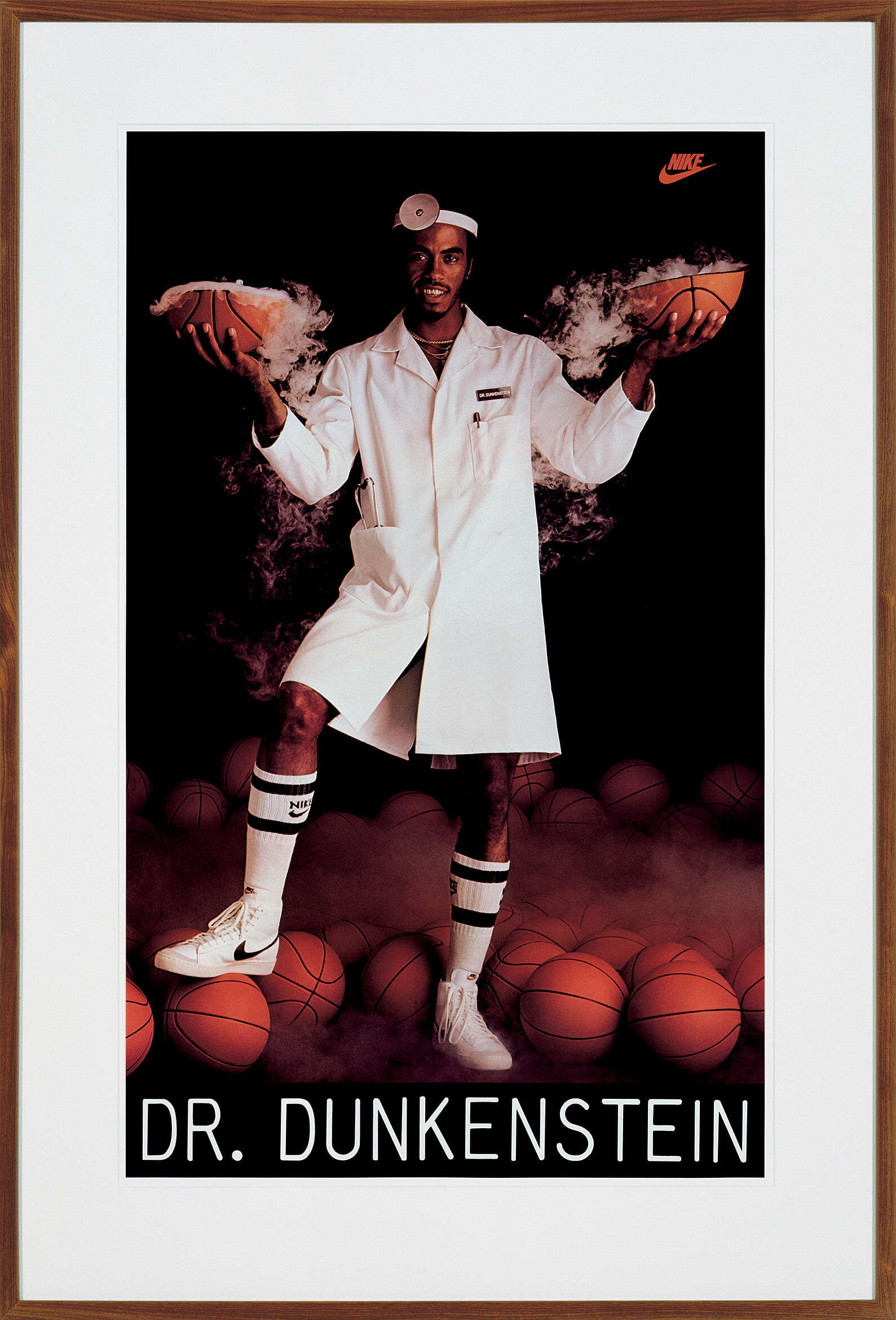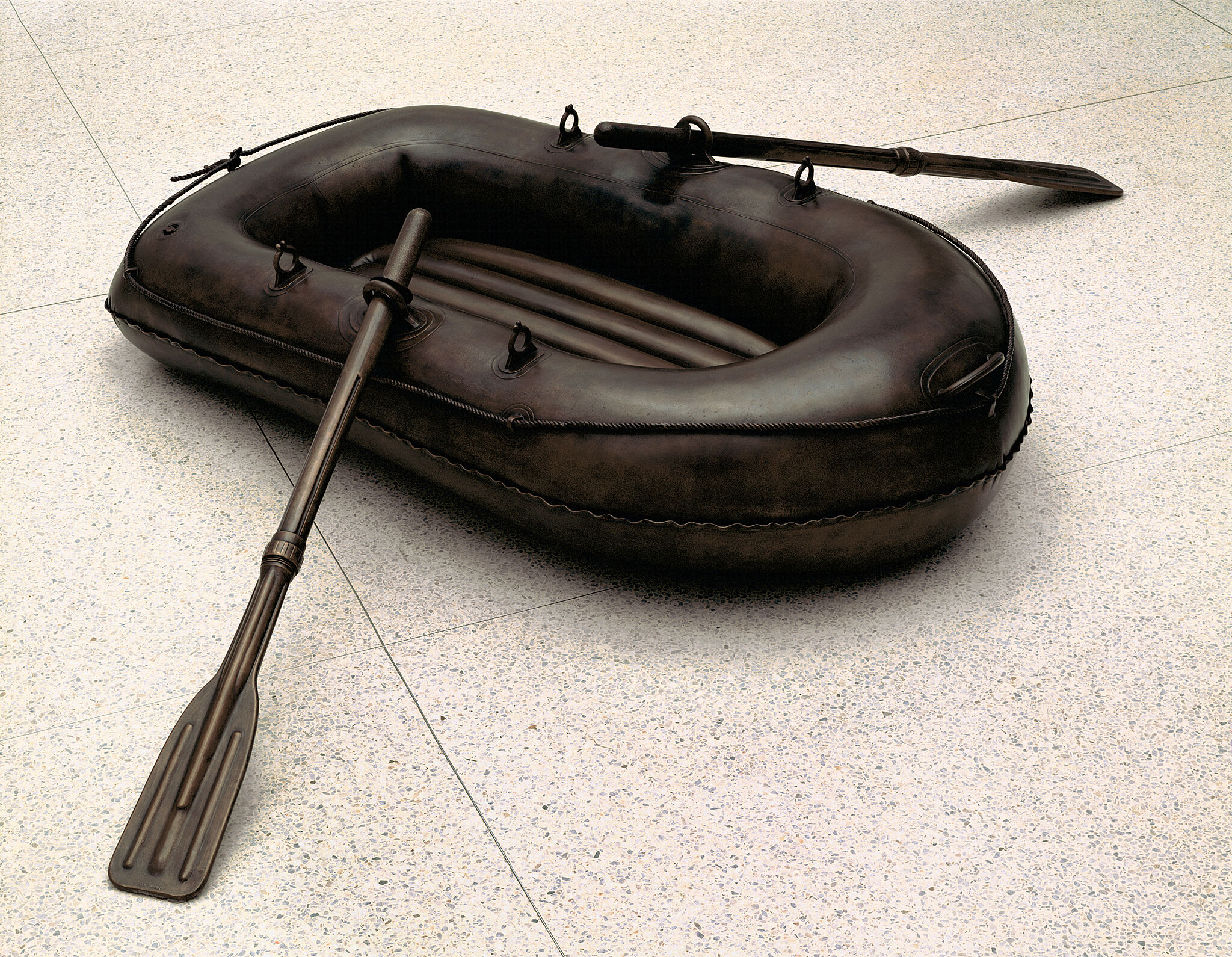On View: One Ball Total Equilibrium
Sep 5, 2014
On view in the exhibition, Jeff Koons: A Retrospective, One Ball Total Equilibrium Tank, (Spalding Dr. J 241 Series), (1985) continues to resonate with me since I first saw it in the Whitney’s 1987 Biennial exhibition. For this sculpture—and others with multiple basketballs in his Equilibrium series—Jeff Koons set out to have, in his words, “a basketball just hover in a state of equilibrium, where all the forces would be equal.”
Koons consulted with the Nobel Prize-winning physicist, Dr. Richard P. Feynman, and was able to suspend the basketball by filling more than half the tank with a solution of refined salt and distilled water. He also filled the ball itself with distilled water so that it would be supported by the heavier saline mixture. Then Koons slowly poured more water into the top part of the tank so that the ball floats in the liquid instead of on its surface. For Koons, the basketballs resemble “something very, very pure, just like an embryo would be and water within the womb.”
However, this state of perfection is fragile and impermanent. Temperature fluctuations and vibrations blend the solutions of water, causing the ball to move off-center and eventually to sink. The improbability of this sculpture underscores its metaphorical associations with life, death, and ambition that Koons carefully considered when he made a series of works for Equilibrium, his 1985 exhibition at the East Village Gallery, International with Monument.
Koons conceived his Equilibrium exhibition as a multilayered allegory about unattainable states of being. The other works in the series are comprised of unaltered Nike basketball posters and sculptures of flotation devices that address impossible dreams, life, and death in different ways. Koons refers to the iconic basketball players in the posters as “sirens” who beckon young people to fame and fortune, unobtainable for all but the very few; cast in bronze, a lifeboat and an aqualung—designed to save lives—become lethal death traps.
The works in the Equilibrium series reveal Koons’s astoundingly diverse approaches to transforming familiar objects into archetypes. But although the posters and bronze sculptures possess their own intense energy and spirit, One Ball Total Equilibrium Tank continues to stand out for me. I remember how awed I was by my first encounter with the iconic, gravity-defying basketball floating in the center of its tank in 1987. Today, this remarkable piece retains its power and magic as a compelling symbol of contemporary culture.
By Dina Helal, Manager of Education Resources



